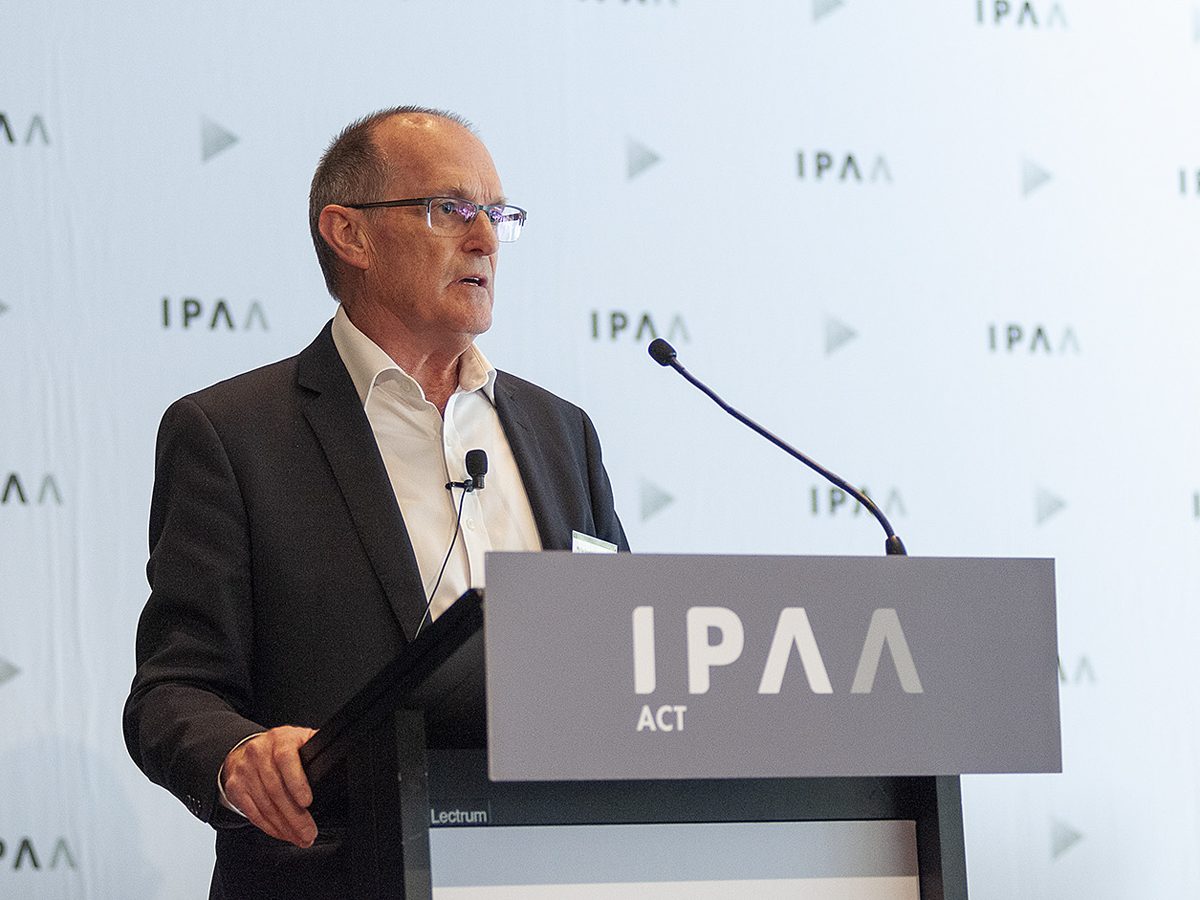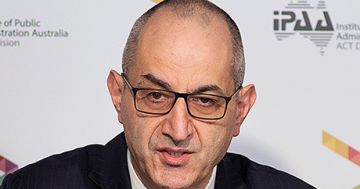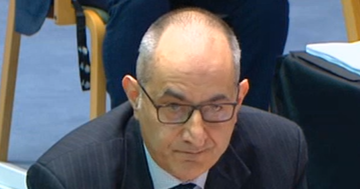
Gone: former PM&C head Phil Gaetjens was considered too close to the former government. Photo: IPAA.
Change has been swift at the top of the APS, with Department of Prime Minister and Cabinet Secretary Phil Gaetjens out and Stephanie Foster named as acting head until the new Albanese Labor Government makes a permanent appointment.
Mr Gaetjens, a former chief of staff to the previous Prime Minister Scott Morrison, was not expected to stay on and, in effect, had a target on his back in the event of a Labor win.
New Prime Minister Anthony Albanese declined to express confidence in Mr Gaetjens during the campaign.
Mr Albanese revealed the change in his first press conference as Prime Minister today before travelling to Tokyo for the Quad security meeting.
“Stephanie Foster is the acting head of the Department of Prime Minister and Cabinet, as of yesterday,” he said.
“I will be making an announcement at an appropriate time after we go through the formal procedures, which are in place, for the appointment of a secretary of the Department of Prime Minister and Cabinet.”
Mr Albanese made a point of noting the professionalism of the public service during the election process, saying his government would not be sacking public servants, although that may not extend to department heads.
Machinery of government (MOG) changes will wait until caucus meets on Tuesday week (31 May) and the full ministry is named. The ministry will be sworn in the next day.
“We will have a meeting of the ministry next Wednesday, along with meetings of the appropriate cabinet committees, including the NSC [National Security Committee] and the ERC [Expenditure Review Committee],” Mr Albanese said.
“I met with the Department of Prime Minister and Cabinet yesterday, and I thank them for their professionalism.
“It was a reminder as a former deputy prime minister and minister of how valued our public servants are. We won’t be sacking public servants either.
“We’ll be valuing public servants and respecting them. And the fact that we’re able to have discussions and put measures in place to allow, whatever the outcome of the result on Saturday, for those arrangements to be put in place says a lot about how professional our public service is. We should not take it for granted.”
ANU Professor John Wanna, who specialises in public administration, expected Mr Albanese to retain most of the current agency heads but urged him to simplify portfolios and untangle unrelated responsibilities so there were clear reporting lines.
Professor Wanna said some departments contained too many areas and answered to too many ministers.
He agreed with former Public Service Commissioner Andrew Podger who argued that there ought to be a stronger alignment between the core set of functions and clear identification in the portfolio and “not have this amalgam where people didn’t know who they were responsible to”.
“There were some departments that were responsible to about five ministers and that’s getting ridiculous,” Professor Wanna said.
“So some clear alignment of simple, departmental names with a clear mandate of what they’re meant to be doing and lining it up with a minister who has portfolio responsibility, yes they might have a junior minister underneath them, but there’s a single point of reporting to that minister. That would clarify a lot.”
In other cases, ministerial titles and departments were thrown together to fix a political problem, Professor Wanna said.
He said if the government simplified arrangements, the Opposition would probably follow suit.
Professor Wanna expected most of Mr Albanese’s shadow ministry to stay in their jobs but there would be changes, some brought on by the election results, such as the loss of Home Affairs spokesperson Kristina Keneally.
He warned that Labor needed to be careful managing the MOG changes because they were hugely expensive and could destabilise a government for months.
For example, at one point, climate change was spread across four departments, staff didn’t have the same IT system and they couldn’t communicate with each other in some instances.
“MOG changes can seem easy for the politicians, but digesting them as a service can take months,” Professor Wanna said.
MOG changes can include the creation or abolition of an entity or portfolio and the reallocation and transfer of functions and responsibilities among agencies after a change to the Administrative Arrangements Order (AAO) or decision of the Prime Minister or Cabinet.
The Prime Minister may specify a completion date for a MOG change, but otherwise, entities are expected to complete MOG changes within 13 weeks.
PM&C, the Department of Finance, the Australian Public Service Commission (APSC), the National Archives of Australia, Attorney-General’s and the Digital Transformation Agency are all involved in managing the changes, including funding appropriations, the movement of staff, adjustments to pay and conditions, records management and solving disputes.
A guide to MOG changes can be found on the Finance website.





















